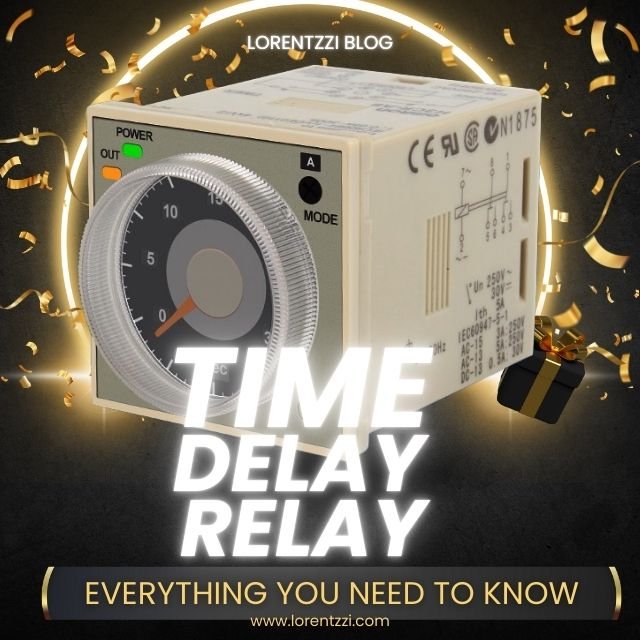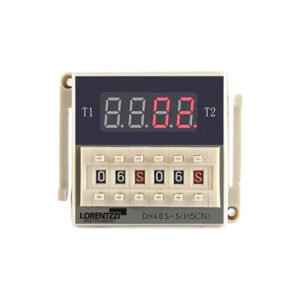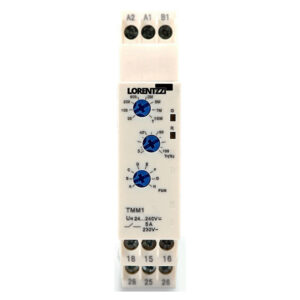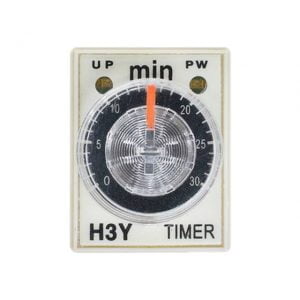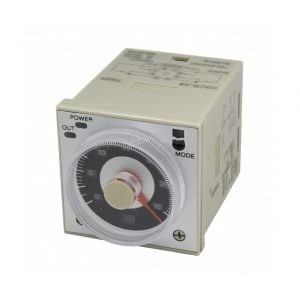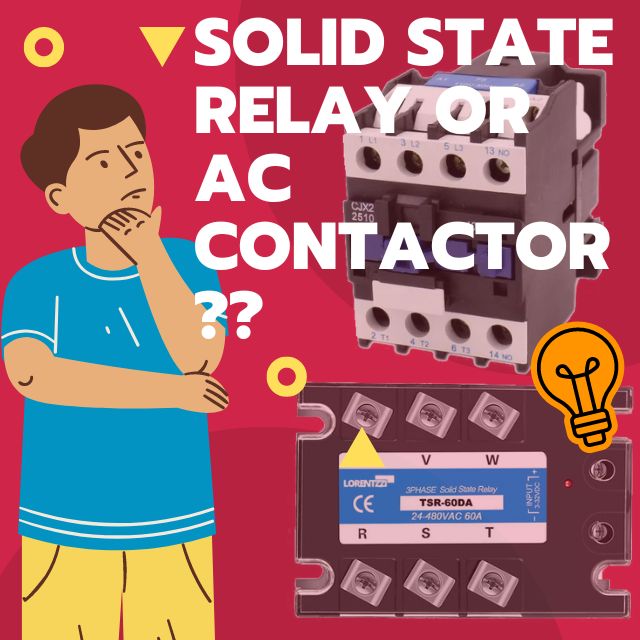The time delay relays can be found in a lot of applications, no matter in industrial control area or residential lighting control.
Today let’s learn some knowledge about time delay relays and its functions.
The time delay relays are designed to control an event based on time. The primary function of these relays is to delay the onset of operation, an operation which is initiated by a signal that could be as simple as turning on a switch.
What is a Time Delay Relay?
A time-delay relay is a time-based, electrically operated switch that waits a preset amount of time after the coil is energized (or de-energized) before the contacts change state.
In short: it is a relay that “pauses” before opening or closing.
It operates in response to a signal and switches the contacts after a set time delay. This delay can be a time-delay on or time-delay off.
There are several types of time-delay relays, including on-delay, off-delay, interval-on, and repeat-cycle relays. Each type has its own unique features and is suitable for different applications.
In the fifth section below, we will go into more detail about the functions of each type of time-delay relay.
How does a Time Delay Relay Work?
The working principle of a time delay relay is relatively straightforward.
When a voltage or current signal is applied to it, for an on delay time relay, it will not act right now but after a set time.
On the contrary, an off delay time relay will continue to work even a power is removed from this time relay until the end of a set time .
Applications of time delay relays
As mentioned before, the time delay relays are widely used in industrial control applications and our daily life. Here below are their typical applications:
In the realm of industry, these relays play a pivotal role in automated control systems, aiding in the orderly progression of operations. Their presence is also significant in motor control hubs, conveyor mechanisms, and systems related to heating, ventilation, and air conditioning (HVAC) and so on.
In everyday applications, time delay relays can be found in household appliances like washing machines and dishwashers, where they control the timing of various operations. They are also used in lighting systems, where they can be programmed to turn lights on or off after a certain period, providing energy savings and convenience.
Components of a time delay relay
Time relays usually consist of the 5 parts:
- Clock mechanism: The clock mechanism is used to control the time setting and timing of the time relay. It usually consists of clock circuit, timing circuit, clock device and other parts.
- Electromagnet: The electromagnet is the core component of the time relay. The start and stop of the time relay is realized by controlling the on and off of the electromagnet.
- Linkage mechanism: The linkage mechanism is used to transmit the action of the electromagnet to the controlled equipment to realize the control function of the time relay.
- Shell: The shell of the time relay is usually made of plastic or metal to protect internal components and circuits from external interference.
- Control switch: Time relays are usually equipped with control switches and manual operation buttons, which are convenient for users to control and adjust.
Types of time delay relays
There are several types of time delay relays, the most common types include:
On delay time delay: This type of relay does not switch its contacts immediately after the control signal is applied. Instead, it waits for a preset time period to elapse before switching.

Off delay time delay: This relay switches immediately when external control signal is applied, but when power is removed, it waits for the delay period to end before returning to its original state.

Signal on one-shot time delay relay: This relay turns on immediately when power is applied and turns off after a set time period.

Signal on on/off repeat cycle time delay relay: This relay alternates between on and off states at regular intervals for as long as the external control signal is applied, there are two kinds, one is flicker off start, the other is flicker on start, please their timing charts separately as following:

Signal rising and falling edges time delay relay: when the signal is applied to the time delay relay, it will switch on right now until set time elapsed and restart on again when the signal is removed. The signal on/off delay off start will work conversely, please see the below their working timing charts:

Pulse output time delay relay: The pulse time relay is a “signal shaper” – it does not care how chaotic the input signal is, it only ensures that the downstream equipment receives a standard, reliable, jitter-free pulse.

How to choose a right time delay relay
Selecting a suitable time delay relay can be divided into 6 steps:
- Confirm the delay type: Determine whether you need an on delay, off delay, interval on, or repeating cycle relay.
- Choose the delay time range: Consider the time range of the delay you need. Time delay relays can range from a few milliseconds to several hours.
- Determine its working voltage: For time delay relays with the same function, their working voltages may be different, so before purchasing, please confirm its working voltage, for example, your system voltage is only 24 VDC, so it is best to use a 24 VDC time delay relay without preparing a transformer specifically for it.
- Mounting method: At Lorentzzi we can supply not only din rail type time delays, but also panel mounting type, so please consider this when selecting a timer relay.
- Contact capacity: The load contact capacity of the timing relay produced by different manufacturers may be different, so if you want to control the load directly without an intermediate relay, please consult the supplier for the contact capacity of the timing relay. For example, their contact capacity is 3 A@250 VAC, and you need 5 A@250 VAC, which will be a problem.
- Using environment: Consider the operating conditions. Some relays are designed for a specific environment, such as -20℃ to a maximum of 80℃, so if your usage environment is outside this range, you should use some method to make it work at the appropriate operating temperature.
Conclusion
Choose a right time delay relay is always a not easy thing, by understanding the above knowledge, now you can have a detailed information about each time delay relay, and easy to choose a suitable one for your application.
If you still have questions about them, you can contact us or can send your questions to shonxu@lorentzzi.com for support!

